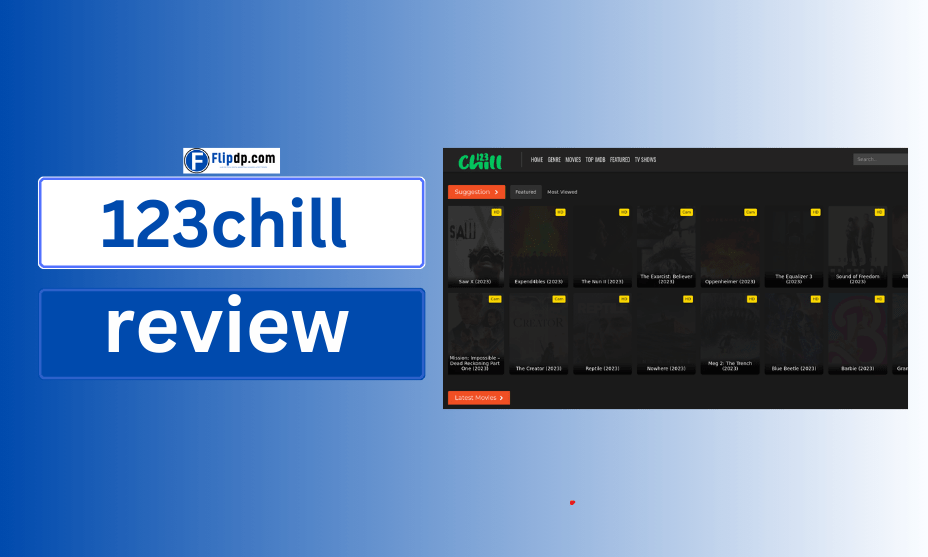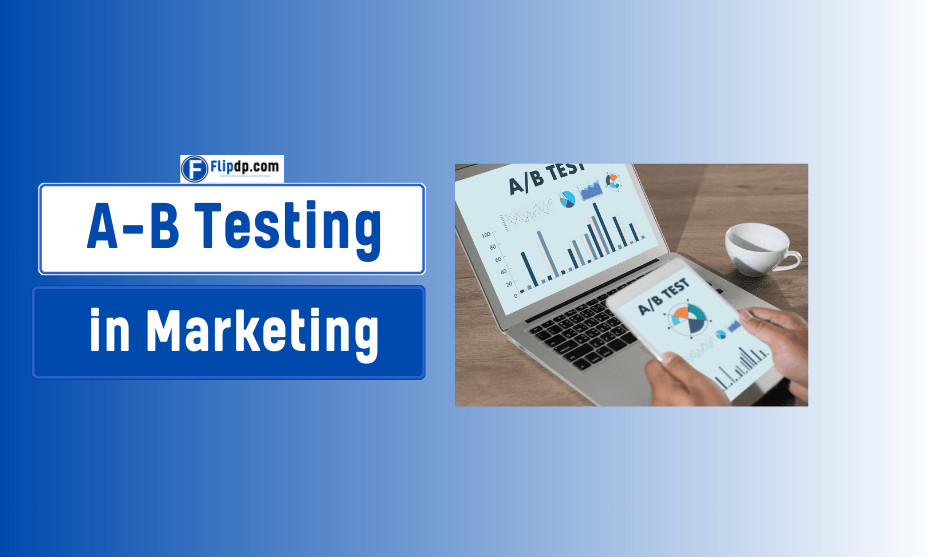Introduction to A/B Testing in Marketing
What is A-B Testing in Marketing, In the ever-evolving landscape of digital marketing, making informed decisions based on data rather than intuition is paramount. One of the most effective methods for achieving this is A/B testing. This powerful technique allows marketers to test variations of a single variable to determine which version performs better. As businesses strive to enhance user experience, improve conversion rates, and ultimately drive sales, understanding what A/B testing in marketing entails is essential.
What is A/B Testing in Marketing? An Overview
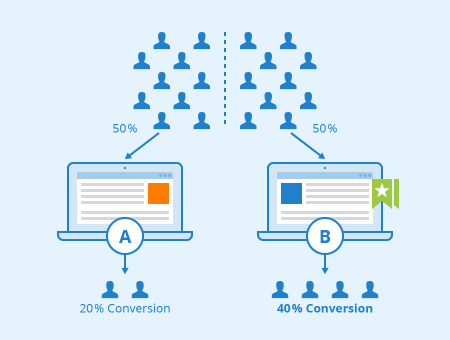
A/B testing, also known as split testing, involves comparing two or more versions of a marketing asset to determine which one yields better results. The goal is to identify the most effective element—be it a webpage, email, ad copy, or call-to-action (CTA)—that resonates with your audience and drives desired actions, such as clicks, conversions, or purchases.
Key Terms:
- Control Group: The group exposed to the original version (Version A).
- Variant Group: The group exposed to the modified version (Version B).
- Conversion Rate: The percentage of users who complete the desired action.
A Beginner’s Guide to A/B Testing for Marketers
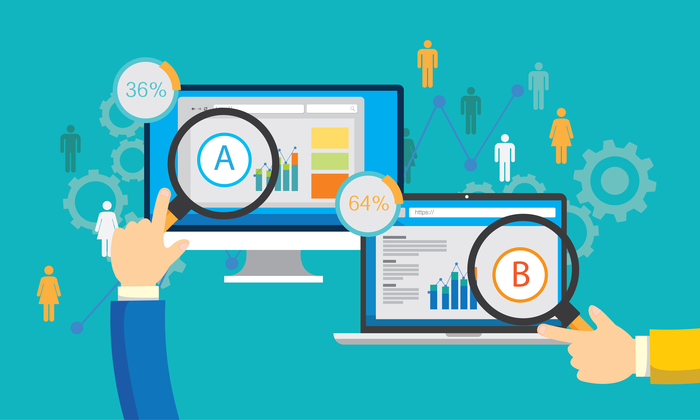
How A/B Testing Works
- Define Your Goal: Before initiating an A/B test, clearly define the objective you want to achieve—whether it’s increasing click-through rates, improving sign-ups, or boosting sales.
- Identify Variables: Determine which specific elements you want to test. Common variables include headlines, images, colors, button placements, and content formats.
- Create Variants: Develop the different versions of your asset. For example, if you’re testing a landing page, create one version with a red CTA button (Version A) and another with a green CTA button (Version B).
- Segment Your Audience: Randomly divide your audience into control and variant groups to ensure that the results are unbiased.
- Run the Test: Launch the A/B test and collect data on user interactions.
- Analyze Results: Measure the performance of each version based on predefined metrics, such as conversion rates and user engagement.
- Implement Changes: Use the insights gained from the test to make informed decisions and optimize your marketing strategy accordingly.
Benefits of A/B Testing
Why A/B Testing is Essential for Successful Marketing Campaigns
- Data-Driven Decision Making: A/B testing eliminates guesswork by providing tangible data on user preferences and behaviors. Marketers can make informed decisions that lead to higher success rates.
- Increased Conversion Rates: By identifying which elements resonate most with your audience, A/B testing helps optimize conversion rates. For example, a simple change in CTA wording can lead to significant improvements in clicks and sales.
- Enhanced User Experience: A/B testing allows marketers to understand user behavior better. By refining your marketing assets based on user feedback, you can create a more engaging and enjoyable experience for your audience.
- Cost Efficiency: Optimizing campaigns through A/B testing can lead to reduced costs per acquisition (CPA). Better-performing ads and landing pages require fewer resources to generate leads or sales.
The Key Benefits of A/B Testing in Digital Marketing

- Quick Results: A/B testing provides rapid feedback on marketing strategies, allowing businesses to pivot quickly if something isn’t working.
- Improved ROI: A/B testing enhances return on investment (ROI) by identifying the most effective strategies, leading to better allocation of marketing budgets.
- Reduction in Bounce Rates: By testing various elements on landing pages, marketers can create more relevant and engaging content, reducing bounce rates and keeping visitors on the page longer.
- Better Audience Insights: A/B testing helps uncover valuable insights about audience preferences, enabling marketers to tailor their messaging for different segments.
Boosting Conversion Rates: The Power of A/B Testing
Understanding how to effectively utilize A/B testing can lead to significant improvements in conversion rates. Here are some strategies to boost conversions through A/B testing:
- Test Headlines: Your headline is often the first thing users see. Testing variations can help you determine which phrases capture attention and encourage clicks.
- Optimize CTAs: Experiment with different CTA placements, colors, and wording. A simple tweak, such as changing “Download Now” to “Get Your Free Guide,” can make a substantial difference in conversion rates.
- Evaluate Visual Elements: Images and videos can significantly impact user engagement. Testing different visuals can help identify which resonate most with your audience.
- Refine Content Layout: A/B testing allows you to experiment with different content structures, such as bullet points versus paragraphs or image-heavy layouts versus text-heavy layouts.
How to Conduct A/B Testing
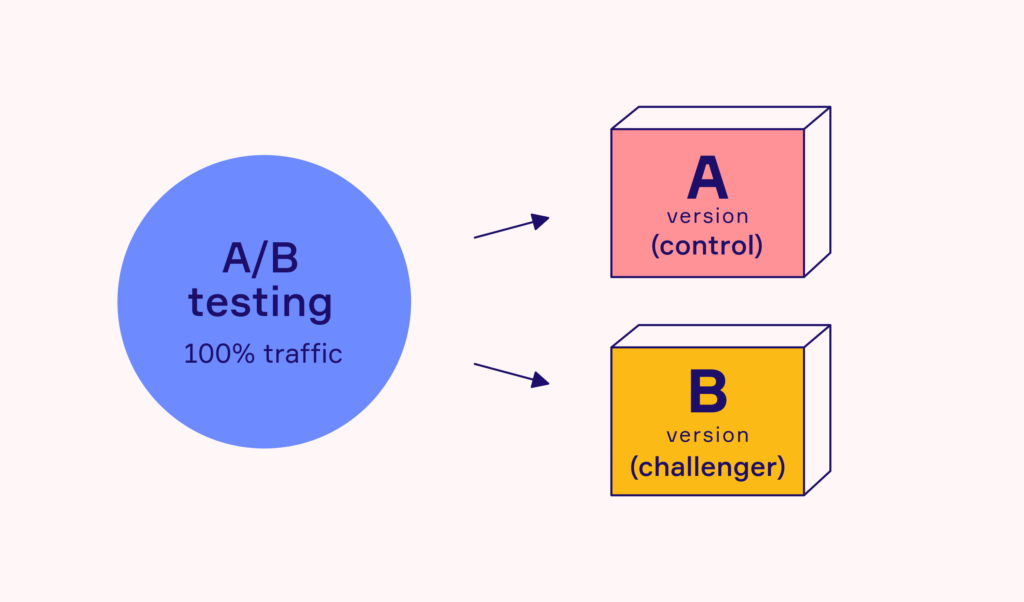
A Step-by-Step Guide to Running Effective A/B Tests
Step 1: Identify Your Objectives
Begin by outlining specific goals for your A/B test. Whether you aim to increase email open rates or improve sales on a landing page, having clear objectives will guide your testing process.
Step 2: Choose Your Variable
Select the element you want to test. This could include any component of your marketing strategy, such as:
- Email subject lines
- Landing page designs
- Ad copy variations
- Product descriptions
Step 3: Segment Your Audience
Ensure that your audience is randomly segmented to avoid bias. This will help you achieve reliable and valid results.
Step 4: Create Your Variants
Develop two or more versions of the variable you want to test. For instance, if you are testing a landing page, create one version with an image of the product and another without.
Step 5: Run the Test
Deploy your A/B test for a sufficient duration to collect meaningful data. The testing period may vary depending on your traffic volume and the goals set.
Step 6: Analyze the Data
Evaluate the performance of each version against your predetermined success metrics. Look for significant differences in user behavior and conversion rates.
Step 7: Implement Changes
Once you have identified the winning variant, implement changes based on your findings to enhance your overall marketing strategy.
How to Plan and Execute A/B Testing for Marketing Campaigns
To effectively plan and execute A/B testing, consider the following steps:
- Set Clear Goals: Your goals should align with overall business objectives. Whether it’s improving customer retention or increasing product sales, having clear targets will guide your testing efforts.
- Use Statistical Significance: Ensure that your sample size is large enough to achieve statistically significant results. This will validate the findings of your A/B tests.
- Continuously Iterate: A/B testing is not a one-time activity. Continuously iterating on your tests and optimizing based on new data will lead to sustained improvements over time.
Best Practices for A/B Testing
Best Practices for A/B Testing in Marketing: Do’s and Don’ts
Do’s:
- Test One Variable at a Time: Testing multiple changes simultaneously can lead to confusion about what influenced the results. Focus on one variable for clearer insights.
- Use a Sufficient Sample Size: Ensure that your test reaches a large enough audience to draw meaningful conclusions.
- Establish a Clear Timeline: Set a specific duration for your tests to avoid premature conclusions.
- Analyze Results Thoroughly: Look beyond the conversion rate; consider other metrics, such as engagement time and bounce rates, for a comprehensive analysis.
Don’ts:
- Avoid Bias: Randomly segment your audience to prevent skewed results.
- Don’t Stop Testing Too Soon: Allow sufficient time for your test to yield accurate results. Stopping early can lead to inaccurate conclusions.
- Don’t Ignore Qualitative Data: While quantitative data is essential, qualitative feedback can provide deeper insights into user preferences.
Common Mistakes to Avoid During A/B Testing
- Testing Too Many Variables: Attempting to test multiple elements simultaneously can confuse results and lead to inconclusive outcomes.
- Neglecting the Control Group: Always include a control group to compare against your variants.
- Not Defining Success Metrics: Clearly define what success looks like before starting the test to ensure you can accurately evaluate results.
- Overlooking Seasonality: Be aware of seasonal trends that might affect your testing results. Testing during significant events can skew the data.
Effective A/B Testing Techniques for Maximum Impact
To maximize the effectiveness of your A/B testing efforts, consider implementing the following techniques:
- Use Personalization: Tailor your tests to specific audience segments for more relevant insights.
- Integrate User Feedback: Incorporate user feedback from surveys or reviews to inform your testing strategies.
- Prioritize High-Traffic Pages: Focus your A/B testing efforts on high-traffic pages or assets that have the most significant impact on your overall marketing goals.
Tools for A/B Testing
The Best Tools for A/B Testing in Marketing
There are several tools available to facilitate A/B testing in marketing. Here are some of the most popular options:
- Google Optimize: A free tool that integrates with Google Analytics, allowing users to conduct A/B tests and analyze results effectively.
- Optimizely: A leading A/B testing platform that offers advanced features for web and mobile optimization.
- VWO (Visual Website Optimizer): A user-friendly platform that enables marketers to create A/B tests without needing extensive coding knowledge.
- Kameleoon: This tool provides A/B testing capabilities along with personalization features, making it suitable for enhancing user experiences.
- Unbounce: Primarily focused on landing pages, Unbounce allows marketers to create, publish, and A/B test landing pages without technical skills.
Comparing Top A/B Testing Tools: Which One is Right for You?
When choosing an A/B testing tool, consider the following factors to find the best fit for your marketing needs:
- Budget: Determine how much you are willing to invest in A/B testing tools. What is A-B Testing in Marketing Some options offer free tiers or trials, while others may require a subscription fee.
- Ease of Use: Look for tools that have intuitive interfaces, especially if your team lacks technical expertise. A user-friendly tool will streamline the testing process.
- Integration Capabilities: Ensure that the tool can integrate with your existing marketing stack, including analytics platforms and customer relationship management (CRM) systems.
- Reporting Features: Opt for tools that offer comprehensive reporting and analytics capabilities to track performance effectively.
- Customer Support: Reliable customer support is crucial for troubleshooting issues and optimizing your A/B testing processes.
A/B Testing Case Studies: Lessons from Top Brands
These real-world examples illustrate the impact of A/B testing on marketing success. Key lessons from these case studies include:
- Prioritize User Experience: Understanding user behavior and preferences is crucial for optimizing marketing assets. A/B testing helps identify what resonates with users, leading to improved experiences.
- Data-Driven Decision Making: Utilizing data from A/B tests allows brands to make informed decisions that enhance their overall marketing strategies.
- Continuous Improvement: A/B testing should be an ongoing process. Regularly iterating on marketing assets based on testing results ensures that brands stay competitive and relevant.
Conclusion
A/B testing is a powerful and essential strategy in the modern marketing landscape, enabling businesses to make data-driven decisions that enhance user experience and boost conversion rates. By systematically testing variations of marketing elements—be it web pages, emails, or advertisements—marketers can uncover what truly resonates with their audience, leading to more effective campaigns and improved ROI.
FAQs, What is A-B Testing in Marketing
Q1: What is A/B testing in marketing?
A: A/B testing, also known as split testing, is a marketing experiment where two versions of a web page, email, or other content are compared to determine which one performs better. This helps marketers make data-driven decisions to improve their campaigns.
Q2: How does A/B testing work?
A: In A/B testing, two versions (A and B) of a marketing asset are shown to different segments of the audience. Metrics like conversion rates, click-through rates, or engagement are measured to determine which version is more effective.
Q3: Why is A/B testing important in marketing?
A: A/B testing helps marketers understand what resonates best with their audience. It allows for optimizing campaigns based on actual data rather than assumptions, which can lead to better results and higher return on investment (ROI).
Q4: What elements can be tested in an A/B test?
A: Marketers can test various elements, such as headlines, images, call-to-action buttons, email subject lines, website layouts, and even pricing models to see which version drives better results.


